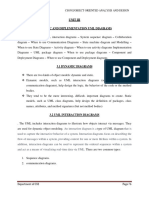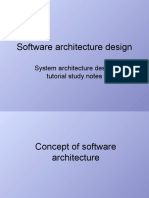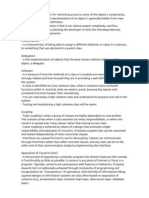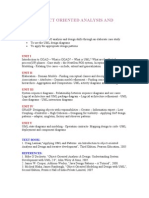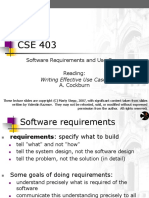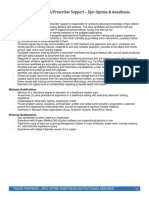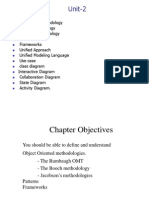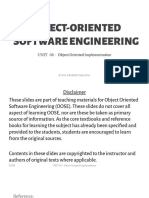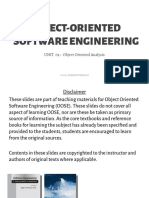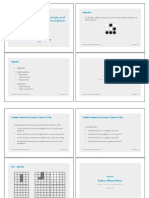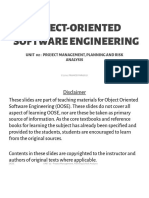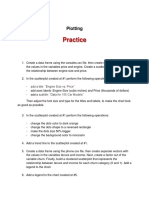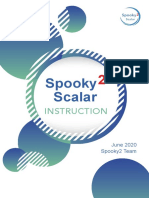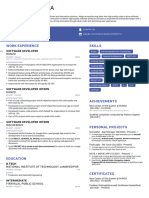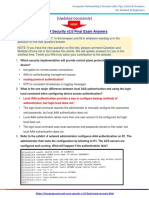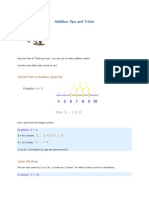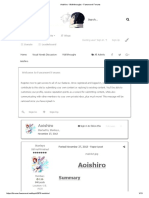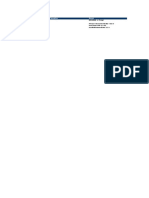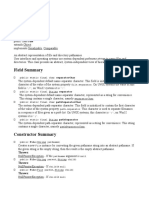0% found this document useful (0 votes)
195 views97 pagesObject Orientation Fundamentals
Fundamentals of object orientation, objects, classes, classification and object models delivered to post-graduate students of Object Oriented Software Engineering.
Uploaded by
Pramod ParajuliCopyright
© © All Rights Reserved
We take content rights seriously. If you suspect this is your content, claim it here.
Available Formats
Download as ODP, PDF, TXT or read online on Scribd
0% found this document useful (0 votes)
195 views97 pagesObject Orientation Fundamentals
Fundamentals of object orientation, objects, classes, classification and object models delivered to post-graduate students of Object Oriented Software Engineering.
Uploaded by
Pramod ParajuliCopyright
© © All Rights Reserved
We take content rights seriously. If you suspect this is your content, claim it here.
Available Formats
Download as ODP, PDF, TXT or read online on Scribd
/ 97










